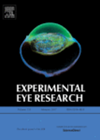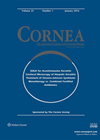You searched for "epithelium"
Chemical injury
You are the on-call ophthalmologist. You receive a call from A&E regarding a 45-year-old man who sustained a chemical injury. He was mixing some cement, when a small amount entered his left eye. He was not wearing any protective goggles....Patient changes eye colour permanently and has brighter and whiter looking eyes
1 December 2017
|
EYE - Cornea, EYE - General
In this new series, Simerdip Kaur takes a look at the latest ophthalmology-related news stories and asks which are scientific reality and which are ‘fake news’. Headline: Patient changes eye colour permanently and has brighter and whiter looking eyes If...
Principles of management
Whatever section of pathology is to blame and wherever it strikes, the aim of treatment is always the same. Find the cause if you can. Establish the effects of the cause. Halt the pathological process if you can. Reverse its...Cornea teaching techniques: one cornea donor tissue for two purposes
2 February 2024
| Bryher Francis, Shokufeh Tavassoli
|
EYE - Cornea
There is a national shortage in the UK in corneal graft material [1,2]. The majority (69%) of corneal transplants in the UK are partial thickness, with 35% being Descemet membrane endothelial keratoplasty (DMEK) [2]. During the preparation of the donor...
Herpes zoster ophthalmicus: a clinician’s perspective
25 January 2023
| Anitha Priya Arun Shankar, A. R. Reddy
|
EYE - General
Introduction Herpes zoster, commonly known as shingles, is caused by the reactivation of varicella zoster virus (VZV). The term herpes is derived from a Greek work, herpein, which means ‘creeping’ and the word zoster means a belt or a girdle...
Feb/Mar 2014 Quiz 2
1 February 2014
| Imran Ashfaq, Rajen Gupta
|
EYE - Cataract, EYE - Cornea, EYE - Glaucoma, EYE - Imaging, EYE - Oculoplastic, EYE - Neuro-ophthalmology, EYE - Oncology, EYE - Orbit, EYE - Paediatrics, EYE - Pathology, EYE - Refractive, EYE - Strabismus, EYE - Vitreo-Retinal, EYE - General
History A 65-year-old lady presented with a ten year history of nonspecific visual disturbance and mild symptoms of dry eyes. Questioning revealed progressive nyctalopia. Previous medical history of note included Crohn’s disease requiring two bowel resections including small intestine. Figure...
An anterior segment lump: a diagnostic and treatment challenge
Case presentation A 50-year-old female presented to eye casualty with a lump on the left medial lower eyelid with associated redness and occasional bleeding. The lump was present for a few months with recent enlargement (Figure 1). Her past medical...Quiz Feb/Mar 2020
5 February 2020
|
EYE - General
History A 92-year-old female patient was referred for a three-month history of a left conjunctival growth with ocular irritation. Her past medical history included: hypertension, back pain and osteoarthritis, all of which were controlled by medication. On examination: vision in...
Traumatic ‘toy’ gun injury leading to permanent vision loss
6 April 2021
| Ehinomen Inegbedion, Doa’a Kerwat, Goncalo Almeida
Pseudoxanthoma elasticum (PXE) is a progressive, inherited disorder of connective tissue that affects the skin, cardiovascular system and retina. Ocular manifestations of the disease are related to Bruch’s membrane, a thin elastic tissue layer located between the retinal pigment epithelium...
Importing iron to the retina
1 October 2017
| Graham Wallace
|
EYE - Vitreo-Retinal
In the retina, iron is particularly critical for the visual phototransduction cascade. In the retinal pigment epithelium (RPE), RPE65 activity leads to 11-cis-retinaldehyde, the photosensitive component of rhodopsin production and iron containing enzymes are necessary for disc replacement in photoreceptor...
Retinitis pigmentosa (RP) associated cystoid macular oedema (CMO)
1 October 2017
| Jonathan Chan
|
EYE - Vitreo-Retinal
This is a review article from two units in the UK and Australia, highlighting the supporting evidence of possible pathogenesis and treatment modalities of CMO in RP. The authors proposed that the likely mechanisms for RP-CMO involved the breakdown of...






